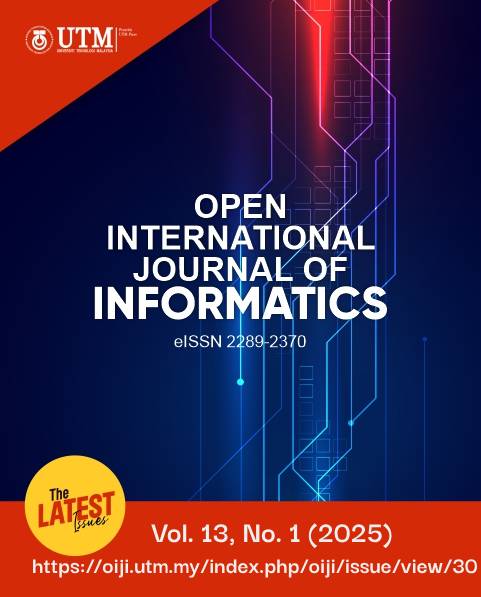A Pilot Analysis of Factors Affecting Satisfaction of Using Interactive Digital Whiteboard Among University Postgraduate Students
DOI:
https://doi.org/10.11113/oiji2025.13n1.333Keywords:
Interactive Digital Whiteboard, Satisfaction of Use, Higher Education, Pilot StudyAbstract
The COVID-19 lockdown has sparked educational approach all around the world and transformed the traditional learning to online engaging learning. Even so, this transformation has demonstrated the need to implement interactive e-learning technologies on many occasions, and this allows lecturers to help students flexibly develop their soft and technical skills required by the course they are attending. As a result, more online learning, like ODL and using a blended learning method, emerged. Therefore, it is important to understand students' satisfaction of using the interactive online technology into their learning be it as either a means for learning the online lectures or group task meeting assistant. This study piloted a survey on fifty Universiti Teknologi Malaysia, Kuala Lumpur (UTMKL) postgraduate students who attended online courses. This study aims to explore the clarity, reliability and validity of the questionnaire before a full-scale study takes place. An evaluation of the instrument's reliability was conducted using Cronbach's Alpha, alongside an evaluation of indicator reliability through outer loadings. The study revealed that all factors namely perceived usefulness, perceived ease of use, perceived ease of learning, perceived interaction, perceived motivation and perceived satisfaction are reliable to be postulated as the hypotheses in developing a model to explore how perceived usability factors influence postgraduate student satisfaction with the use of the digital whiteboard at UTMKL. The results of this pilot research offer important information about possible factors from usability perspectives to measure satisfaction of using interactive learning tools in teaching and learning. To create a thorough model of satisfaction factors, future studies will increase the sample size and apply inferential statistical methods. Promoting interactive learning at UTMKL and other comparable environments can be explored further by this study, which also may add the expanding corpus of research on the use of technology in education.

















